
Exploring the Mystical Cave of Veda Vyasa
Discover the Cave of Veda Vyasa: A sacred site of spiritual significance nestled in the breathtaking landscapes of Uttarakhand, India.
The Cave of Veda Vyasa, nestled in the serene landscapes of Uttarakhand, is a must-visit for spiritual seekers and nature lovers alike. Revered as a significant Hindu pilgrimage site, it is believed to be the place where the great sage Veda Vyasa composed the Mahabharata. With its tranquil atmosphere and stunning surroundings, this cave offers a unique opportunity to connect with India's rich spiritual heritage while enjoying breathtaking views of the Himalayas.
A brief summary to The Cave of Veda Vyasa
- QFFV+PXM, NH 58, Mana, Uttarakhand, 246422, IN
- +911352552626
Local tips
- Visit early in the morning to experience the serenity of the cave before crowds arrive.
- Wear comfortable footwear as the trails leading to the cave can be rugged.
- Consider hiring a local guide to enrich your understanding of the cave's historical and spiritual significance.
- Carry water and snacks, as amenities near the cave are limited.
- Respect the sanctity of the site by maintaining silence and avoiding littering.
Getting There
-
Car
If you are traveling by car, start your journey from the main entry point of Valley of Flowers National Park. Drive towards Mana village, which is approximately 15 km away. Follow NH 58 and keep an eye out for the signs leading to Mana. Once you reach Mana, park your vehicle at a designated area near the village. The Cave of Veda Vyasa is located at a distance of about 1 km from the parking area. From there, you will need to walk to the cave. The path is well-marked, and you can ask locals for assistance if needed.
-
Public Transportation
If you are using public transportation, take a bus or shared taxi from Joshimath to Mana village. The bus ride takes about 1 hour and operates frequently. Once you arrive in Mana, you will need to walk to the Cave of Veda Vyasa, which is approximately 1 km from the village center. Follow the trail signs towards the cave. The path is scenic and easy to navigate, but be sure to wear comfortable shoes.
-
Walking
After you reach Mana, you will need to walk to the Cave of Veda Vyasa. The walk is about 1 km and should take around 20-30 minutes. The trail is relatively easy, passing through lush greenery and offering picturesque views of the surrounding hills. Make sure to stay on the marked path, and you can ask locals for directions if you feel uncertain.
Discover more about The Cave of Veda Vyasa
Iconic landmarks you can’t miss
Auli Inn
25.2 km
Experience the charm of the Himalayas at Auli Inn – a serene resort hotel in Joshimath, perfect for adventure and relaxation.

Hotel Auli D - Hotel In Joshimath
25.8 km
Discover comfort and serenity at Hotel Auli D in Joshimath, your perfect base for exploring the Himalayan wonders and sacred sites.

Ski & Snow Cliff Top Club Holiday Resort at Auli, Uttarakhand
26.8 km
Discover the ultimate alpine retreat at Ski & Snow Cliff Top Club Holiday Resort in Auli, Uttarakhand, where luxury meets adventure in the heart of the Himalayas.

Hotel Manik Resort Auli
26.9 km
Discover the beauty of the Himalayas at Hotel Manik Resort Auli, your serene retreat in the heart of Uttarakhand's majestic mountains.

The Royal Village
27.1 km
Experience the enchanting beauty and adventure of The Royal Village in Auli, Uttarakhand, a premier resort hotel for all travelers.

Ski resort GMVN Auli
27.2 km
Discover Auli, a stunning ski resort in the Himalayas, offering thrilling winter sports and breathtaking views of the Nanda Devi peaks for an unforgettable experience.

Casa Himalaya, Auli
27.3 km
Discover adventure and tranquility at Casa Himalaya, Auli - a premier ski resort in the heart of Uttarakhand's breathtaking Himalayas.

Faraway Cottages, Auli
27.4 km
Discover the tranquil beauty of Faraway Cottages, a perfect retreat in Auli, Uttarakhand, where nature meets comfort.

Ski Resort Auli
27.8 km
Experience the thrill of skiing and the beauty of the Himalayas at Auli Ski Resort, a top destination for winter sports enthusiasts in India.

Auli Tourism
28.7 km
Experience the breathtaking beauty and thrilling adventures of Auli, the Snow Paradise of India, nestled in the majestic Himalayas.

कुमाऊँ हिमालय
52.4 km
Discover the breathtaking beauty and adventure of the Kumayun Himalayas in Chamoli, Uttarakhand—a paradise for nature lovers and thrill-seekers.

Flowers Valley
58.2 km
Explore the serene landscapes and vibrant flora of Flowers Valley, a hidden gem in Uttarakhand perfect for nature lovers and adventure seekers alike.
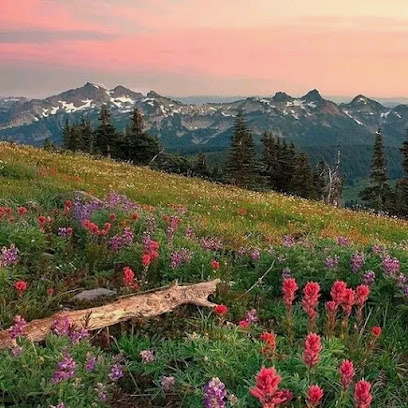
Experience The Himalayas
58.3 km
Embark on a breathtaking adventure in the Himalayas with Experience The Himalayas, where nature meets spirituality in stunning landscapes.

Geographical Society of Central Himalaya
90.5 km
Explore the rich geographical heritage of the Central Himalayas at the Geographical Society of Central Himalaya in Uttarakhand, India.

Lesser Himalaya
98.8 km
Discover the breathtaking beauty and adventure of the Lesser Himalaya in Uttarakhand, a hidden gem for nature lovers and trekkers.

Unmissable attractions to see
Satopanth Glaciers, chamoli district, uttarakhand
0.2 km
Experience the breathtaking beauty of the Satopanth Glaciers in Uttarakhand, an unforgettable hiking destination surrounded by majestic Himalayan landscapes.

Bheem Pul, Mana
0.2 km
Experience the enchanting Bheem Pul in Mana, Uttarakhand - a sacred bridge steeped in legend and breathtaking Himalayan views.

Keshav Prayag
0.2 km
Discover the breathtaking beauty of Keshav Prayag, a hiker's paradise in Uttarakhand, where every step unveils nature's stunning landscapes.

Origin of Saraswati River
0.2 km
Explore the spiritual serenity and historical significance at the origin of the sacred Saraswati River in Uttarakhand, India.

Shree Badrinath Temple
3.3 km
Explore the divine allure of Shree Badrinath Temple, a spiritual haven nestled in the majestic Himalayas, offering tranquility and breathtaking scenery.

Vasudhara Falls
4.3 km
Discover the enchanting beauty of Vasudhara Falls, a serene nature preserve in Uttarakhand, where cascading waters meet breathtaking Himalayan landscapes.

Valley of Flowers, 2 Km
11.9 km
Explore the breathtaking Valley of Flowers in Uttarakhand, a UNESCO World Heritage Site offering stunning landscapes and vibrant alpine flora.

Valley of Flowers National Park
11.9 km
Explore the stunning landscapes and vibrant flora of Valley of Flowers National Park, a UNESCO World Heritage Site in Uttarakhand, India.

Valley of Flowers, The Paradise on Earth
12.3 km
Explore the breathtaking Valley of Flowers, a UNESCO World Heritage Site renowned for its stunning alpine meadows and rich biodiversity in Uttarakhand, India.

River View Point Bridge
12.3 km
Discover the breathtaking vistas and tranquil ambiance at River View Point Bridge in Uttarakhand, a must-visit tourist attraction for nature lovers.

Mana Peak
16.5 km
Explore Mana Peak in Uttarakhand for breathtaking views, serene landscapes, and an unforgettable Himalayan adventure, perfect for nature lovers and trekkers.
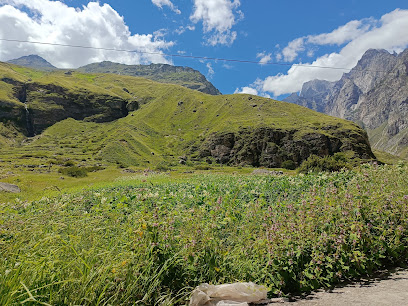
Govind Ghat
18.5 km
Explore the enchanting Govind Ghat, your gateway to the breathtaking Valley of Flowers and the serene beauty of Uttarakhand's Himalayas.

Chanap Valley Camp Side
20.9 km
Explore the breathtaking beauty of Chanap Valley Camp Side, a serene haven in Uttarakhand perfect for nature lovers and adventure seekers.

Chanap Valley trek
21.0 km
Embark on the breathtaking Chanap Valley Trek in Uttarakhand, where stunning landscapes meet serene trails for an unforgettable adventure.

Bhanayi Bugyal
22.1 km
Explore the breathtaking Bhanayi Bugyal, a serene hiking area in Uttarakhand, known for its stunning meadows and panoramic mountain views.

Essential places to dine
Sardeshwari Restaurant
3.3 km
Experience the best of Indian cuisine at Sardeshwari Restaurant in Badrinath - where tradition meets taste.

Saket Restaurant
3.3 km
Experience authentic Indian flavors in Badrinath at Saket Restaurant - your perfect dining spot after temple visits.

Hotel Bhagat
18.1 km
Discover Hotel Bhagat: A welcoming restaurant and hotel offering delicious meals and cozy accommodations in the heart of Uttarakhand.

Pizza Hap
25.0 km
Experience mouthwatering pizzas made with fresh local ingredients at Pizza Hap in Joshimath - a must-visit for every traveler.

Chauhan's Diner
25.1 km
Discover authentic flavors at Chauhan's Diner in Joshimath - where Himalayan charm meets delightful cuisine.

J.M.S Restaurant
25.1 km
Experience authentic local flavors at J.M.S Restaurant in Joshimath - A culinary treasure nestled in Uttarakhand's scenic beauty.
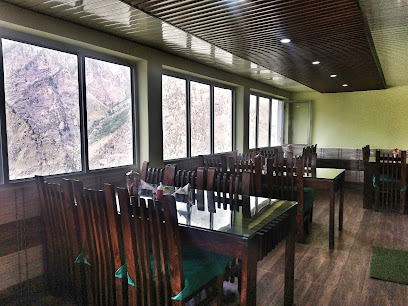
Bawarchi the family restaurant joshimath
25.1 km
Experience authentic Indian flavors at Bawarchi the Family Restaurant in Joshimath - where delicious food meets warm hospitality.

TWENTY 3RD FAST FOOD AND BAKERY
25.2 km
Experience delicious fast food and fresh bakery delights at Twenty 3rd Fast Food and Bakery in Joshimath – a culinary gem near Shri Narsingh Temple.

Auli 'D' Food Plaza
25.2 km
Experience authentic Indian cuisine at Auli 'D' Food Plaza in Joshimath—where every meal offers a taste of local culture amidst stunning mountain views.

Divine Restaurant
25.4 km
Experience authentic Indian cuisine at Divine Restaurant in Joshimath – where local flavors meet warm hospitality.

Hotel Dronagiri
25.8 km
Discover exquisite local cuisine at Hotel Dronagiri in Joshimath – where every meal offers a taste of Uttarakhand's rich heritage.

Auli Snacks and Dhaba
26.3 km
Discover authentic Indian flavors at Auli Snacks and Dhaba amidst the breathtaking beauty of Uttarakhand's mountains.
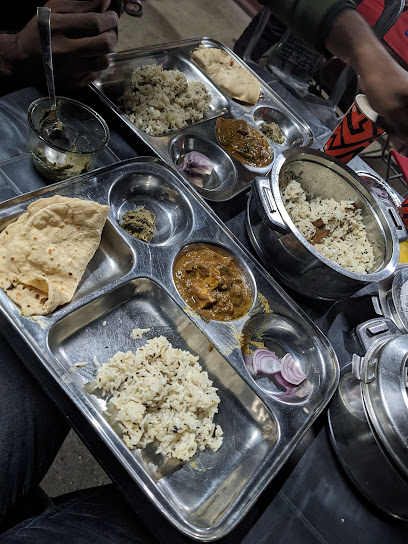
Best Hotel in Auli - Shail Shikhar Heritage Inn
27.0 km
Discover unparalleled comfort and stunning mountain views at Shail Shikhar Heritage Inn in Auli - your perfect getaway in Uttarakhand.

Snow view restaurant auli
27.0 km
Experience culinary bliss with stunning Himalayan views at Snow View Restaurant in Auli.

The Himalayan Resturant
27.1 km
Experience fast food like never before at The Himalayan Restaurant in Uttarakhand, where local flavors meet stunning mountain views.
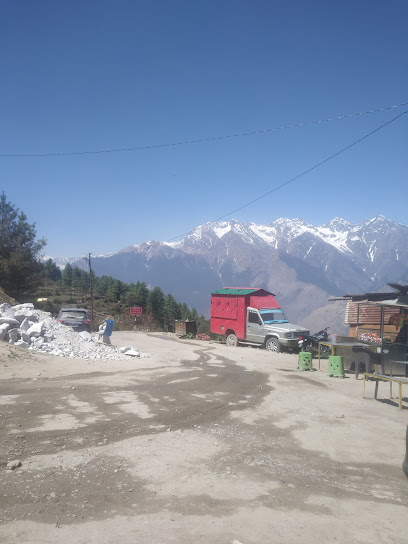
Markets, malls and hidden boutiques
Himalaya Coffee Centre
0.2 km
Experience the tranquil charm of Himalaya Coffee Centre, where aromatic brews meet breathtaking Himalayan views.

Chandan Coffee Centre Maana
0.5 km
Discover the charm of Chandan Coffee Centre Maana, where exquisite coffee meets breathtaking Himalayan views in a cozy atmosphere.

Khampa Woollen Garments
3.3 km
Experience the rich heritage of Uttarakhand at Khampa Woollen Garments, where traditional craftsmanship meets modern shopping.

Valley of Flowers
11.6 km
Discover the breathtaking beauty of the Valley of Flowers in Uttarakhand, where vibrant blooms and majestic landscapes create a paradise for nature lovers.

Valley of flowers checkpoint
12.3 km
Explore the breathtaking Valley of Flowers through its checkpoint, your gateway to a spectacular floral wonderland in the heart of Uttarakhand.

Camp valley of flowers Ghanghria
12.5 km
Discover the breathtaking beauty of Camp Valley of Flowers Ghanghria, a serene campground in Uttarakhand, perfect for nature lovers and adventure seekers.

Sleepwell
24.1 km
Discover unparalleled comfort at Sleepwell in Joshimath, where quality mattresses and stylish furniture meet exceptional service.

Living in Painting
24.8 km
Explore the vibrant world of local art and unique souvenirs at Living in Painting, a cultural gem in the heart of Joshimath, Uttarakhand.

Hotel Saidham Joshimath
24.9 km
Discover the beauty and adventure of the Himalayas at Hotel Saidham Joshimath, your perfect getaway for skiing and relaxation.

Shri badrinath fashion store readymade shop
25.1 km
Explore Shri Badrinath Fashion Store in Joshimath for a unique blend of traditional and modern clothing that captures the essence of Uttarakhand.

Sri Ram Store
25.1 km
Shop unique clothing and accessories at Sri Ram Store in Joshimath, where local fashion meets Himalayan charm.
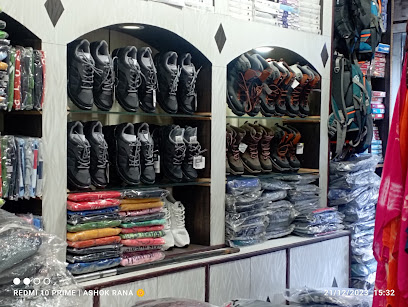
Radhika collection
25.1 km
Discover unique clothing at Radhika Collection in Joshimath, where tradition meets modern style in the heart of Uttarakhand.

Shubham gift center
25.2 km
Discover unique souvenirs and local handicrafts at Shubham Gift Center in Joshimath, a must-visit for every traveler seeking authentic Uttarakhand treasures.

Navneet Silori
25.2 km
Discover authentic local crafts and souvenirs at Navneet Silori, a vibrant store in Joshimath, Uttarakhand, showcasing the rich heritage of the Himalayas.

Auli 'D' Bakers
25.2 km
Discover Auli 'D' Bakers in Joshimath for a delightful array of fresh pastries and cakes, perfect for sweetening your Himalayan adventure.

Essential bars & hidden hideouts
Mishra Restaurant
3.2 km
Experience authentic Indian cuisine at Mishra Restaurant, an essential stop for travelers in the sacred town of Badrinath.

Braham Kamal Restaurant
3.8 km
Discover the flavors of Uttarakhand at Braham Kamal Restaurant, a family-friendly dining gem in the heart of Badrinath.

Vankatesh
3.8 km
Discover the flavors of Uttarakhand at Vankatesh, a top-rated restaurant in Badrinath offering a delightful range of Indian cuisine.

Hotel Shyam Palace
12.4 km
Discover the charm of Hotel Shyam Palace in Ghangaria, your gateway to the majestic Himalayas and vibrant local cuisine.

Hotel Preetam
12.4 km
Experience the perfect blend of comfort and local cuisine at Hotel Preetam in Ghangaria, Uttarakhand.

KUBER ANNEX
12.4 km
Explore Kuber Annex in Ghangaria for a delightful dining experience infused with local flavors and hospitality amidst breathtaking natural beauty.

Hotal New Gokul
16.2 km
Experience the authentic flavors of Uttarakhand at Hotal New Gokul, a charming restaurant in Pail Chak Bhyudar, perfect for culinary exploration.

Bolly vista family restaurant
16.4 km
Discover the taste of Uttarakhand at Bolly Vista Family Restaurant, where delicious food meets family-friendly hospitality.

पार्थ स्पेशल ( चौहान जनरल स्टोर & रेस्टोरेंट)
16.4 km
Discover the flavors of Uttarakhand at Paarth Special, a family-friendly restaurant and general store offering delicious local cuisine and warm hospitality.

CAFE BRO
16.4 km
Explore the flavors of Uttarakhand at Cafe Bro, a family-friendly restaurant offering a delightful menu and a cozy atmosphere for all ages.

The Bourbon Club N Lounge
25.3 km
Experience vibrant nightlife at The Bourbon Club N Lounge, a stylish bar in Joshimath, Uttarakhand, offering exquisite drinks and stunning mountain views.

Alpenrose Restaurant
25.4 km
Experience exquisite dining at Alpenrose Restaurant, where breathtaking views meet culinary delights in the heart of Joshimath, Uttarakhand.

Snow bliss hotel and restaurant
26.9 km
Experience the serene beauty and authentic flavors of Auli at Snow Bliss Hotel and Restaurant, a must-visit dining destination for tourists.

Mountain Rover, Auli- Resort
27.3 km
Discover the breathtaking beauty and exhilarating adventures at Mountain Rover, Auli - the ultimate ski resort retreat in the Himalayas.

Rajneesh Kumar
41.1 km
Discover the tranquil vibes and local flavors at Rajneesh Kumar Bar, a perfect retreat in the heart of Kedarnath's stunning landscapes.




